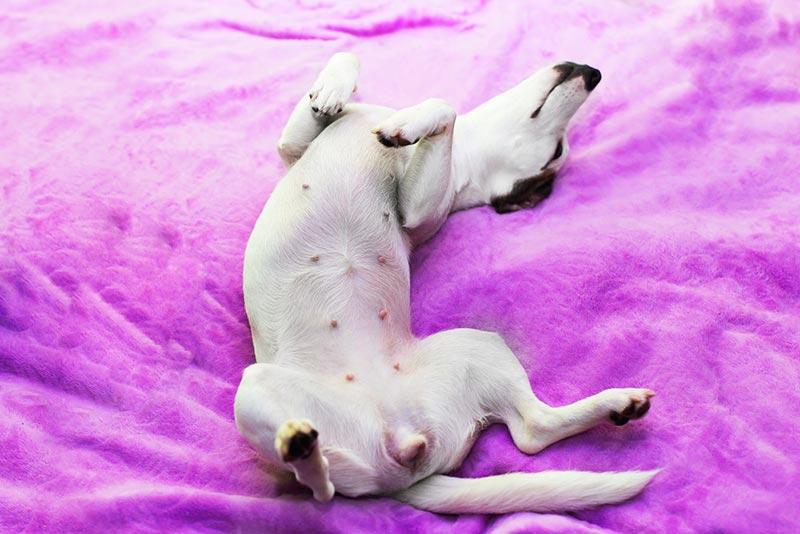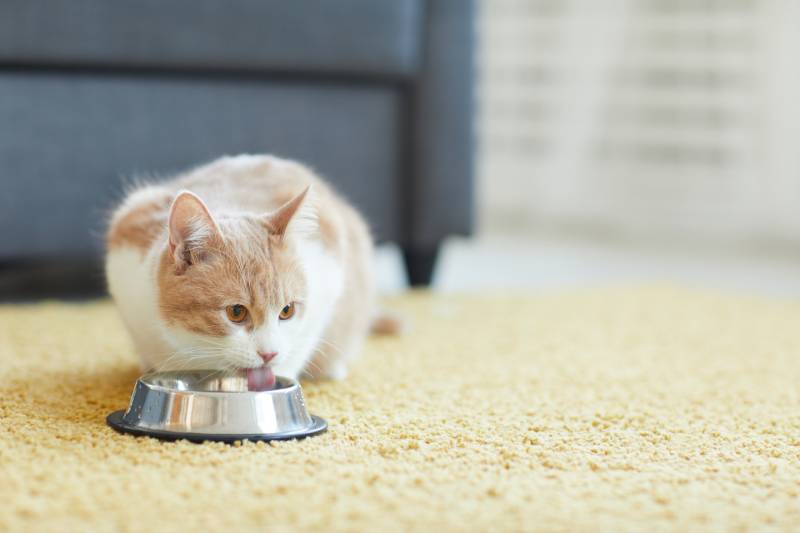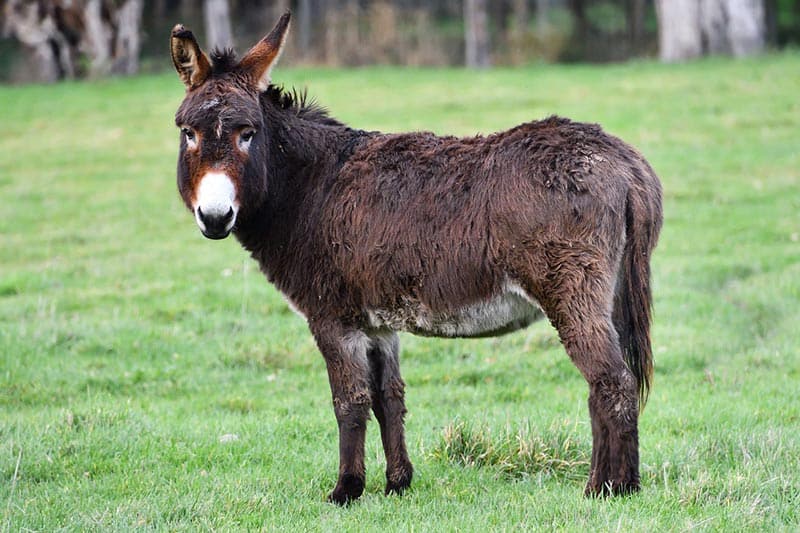VET APPROVED

The information is current and up-to-date in accordance with the latest veterinarian research.
Learn more »Click to Skip Ahead
Our dogs are similar to us in many ways, and many people even say pets and their owners start to look and act alike over time. So, it’s natural to wonder—especially when your dog rolls over for a belly rub—do they have a belly button like we do?
The short answer is yes! As mammals, dogs do have belly buttons, but they look quite different from ours. Keep reading as we explore canine belly buttons and their significance to help you better understand your pet.

What Is a Belly Button?
A belly button, or umbilicus, is the scar that remains after the doctor, parents, or mother cut the umbilical cord at birth. Before that, it connects the developing fetus to the placenta and delivers nutrients and oxygen to the growing baby.
Do Dogs Have Belly Buttons?
Yes, dogs have belly buttons. Like all mammals, dogs develop in the womb, connected to their mother by an umbilical cord cut after birth. The scar that remains is the belly button. However, the appearance of a dog’s belly button can vary widely depending on factors such as breed, size, and weight, and their fur can make it hard to find them. They can look like a small indentation or a raised bump on some dogs, while the fur and skin folds of the abdomen can completely obscure them on other dogs.
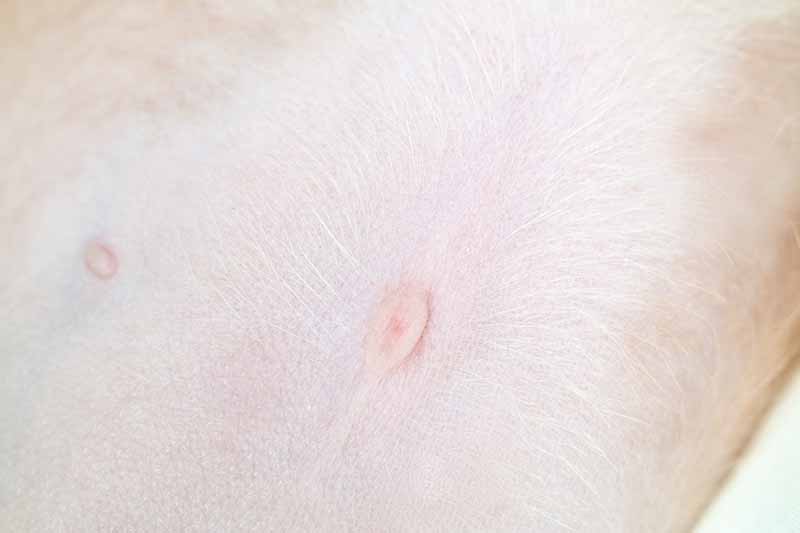
The Role of the Belly Button in Dog Health
While the belly button may not directly impact a dog’s health, it can provide clues about potential health issues. For example, a visible or protruding belly button in a dog may indicate an umbilical hernia. An umbilical hernia occurs when the location where the umbilical cord was attached to the fetus doesn’t close correctly and leaves a small opening through the abdominal muscles and a small portion of fat, tissue, or internal organs protrude through it. Depending on the size, an umbilical hernia may or may not cause pain or discomfort for the dog, but should always be checked by your vet when it’s noticed. Other issues that can affect a dog’s belly button include infection or inflammation, brought on by skin infections or injuries.
How Do I Find My Dog’s Belly Button?
You should be able to find it by looking for a small indentation or raised bump in the midline of the abdominal wall. Finding the belly button on some dogs can be difficult if they have dense fur, so if looking for it doesn’t work, you can try feeling around in the same area for a small scar or bump, which is the belly button. You can ask your veterinarian to point it out if all else fails.
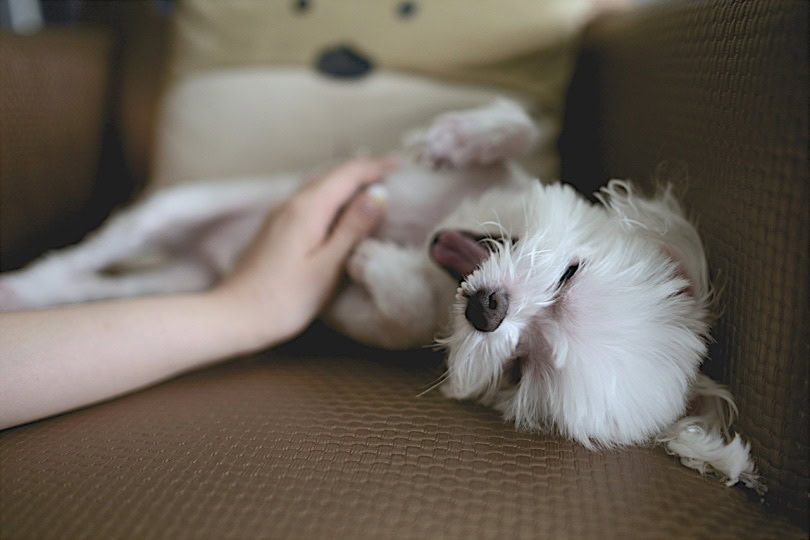
Maintaining a Healthy Belly Button in Dogs
- Keep an eye out for changes in appearance which might help you notice any underlying health issue early.
- Keep your dog’s skin clean and dry to prevent bacterial or yeast overgrowth.
- Avoid rough play or excessive pressure on the belly button area.
- If your dog has an umbilical hernia, get it checked by your vet and avoid pregnancy, which would increase the pressure in the abdomen and worsen it.

Frequently Asked Questions
What If My Dog Is Licking Their Belly Button?
If your dog is licking their belly button, it could indicate an underlying health issue. Some reasons can include itchy skin, pain or discomfort, or even anxiety or stress, as some dogs might lick certain parts of their body to self-soothe. If your dog keeps licking the area or you notice redness, swelling, or discharge, contact the vet to rule out any health issues.
What Should I Do If My Dog’s Belly Button Looks Swollen or Inflamed?
If your dog’s belly button looks swollen or inflamed, it’s likely a sign of an underlying health issue. Contact your vet immediately to schedule an exam and get a proper diagnosis and treatment plan.
How Can I Tell If My Dog Has an Umbilical Hernia?
You may be able to feel a soft lump or bulge near your dog’s belly button if it has an umbilical hernia. However, it’s best to consult your vet for a proper diagnosis and treatment plan if you think your dog has one.
Are Certain Breeds More Prone to Belly Button Issues?
Yes, umbilical hernias have a genetic predisposition. The Shih Tzu, Basenji, Airedale Terrier, and Pekingese are among the dog breeds more prone to umbilical hernias, but belly button issues can occur in any dog breed. Responsible ownership involves avoiding breeding dogs that have suffered from an umbilical hernia.
Can I Touch My Dog’s Belly Button?
Yes, you can touch your dog’s belly button if it doesn’t cause discomfort or irritate the area. Be gentle and avoid poking or prodding too aggressively.

Conclusion
All dogs have belly buttons, and you can find it by looking or feeling around the center of the abdomen for a small indentation or raised bump. While they may seem insignificant, they can provide important insights into canine anatomy and health, and regularly inspecting them is a good idea. Call your vet if you notice any changes or if the dog starts licking the area excessively and keep it clean and dry to prevent bacterial growth.
Featured Image Credit: vilma3000, Shutterstock
